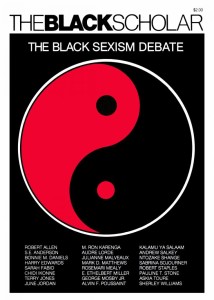In my Black Scholar readings and my trip to the Schomburg, I was confronted with the message that the personal is the political. The Black Sexism Debate states,
“We cannot solve our “personal” problems individually, nor by pretending they are not real. What is required is a collective struggle to change the social conditions that create so many “personal” and social problems.”
In thinking about my final project, I have been interested in mental health and mental illness in communities of color and how it is dealt with both individually and collectively. During the Schomburg visit, I came across an article written by Vanessa Northington Gamble which referenced mental health issues in the black community. For Gamble, her “personal” issues battling depression are political. When she was having difficulties at her job due to her depression she said, “I believed that my performance [work] represented not that of an individual, but that of a race.” This illustrates how mental health issues are political issues in communities of color because individual experiences get generalized to be representative of the whole race. As Gamble also writes about her mother’s suicide attempts and thus, her subsequent struggle with depression, there seems to be the idea that mental health issues are in some way generational and/or genetic.
Gamble invokes bell hooks in arguing that the personal is political. When Gamble wanted to start writing about her battle with depression, her colleague criticized her for: “wanting to put her business out on the street.” However, she counters this by emphasizing that voicing our personal struggles is key to liberation. Gamble says,
“Telling our stories, hooks insists, is a crucial strategy for the self-recovery of black women because it allows us to acknowledge our pain, reach out for solace and find ways of healing. There is no healing in silence… hooks views personal transformation through a political lens. She sees self-hate, low self-esteem, and addiction disorders as reflections of a political system that devalues the lives of black people… Personal recovery, hooks argues, must go hand in hand with political struggles, because no level of individual self-actualization alone can sustain the marginalized and oppressed. We must be linked to collective struggle, to communities of resistance that move us outwards, into the world.”
In my readings and encounters with archival material, I was struck by how the two were in conversation with each other. It is my hope that through my final project that I can bring Shange’s experience and that of other black female artists’ to the forefront so that other women of color can be empowered with the knowledge that their “personal” is political.



